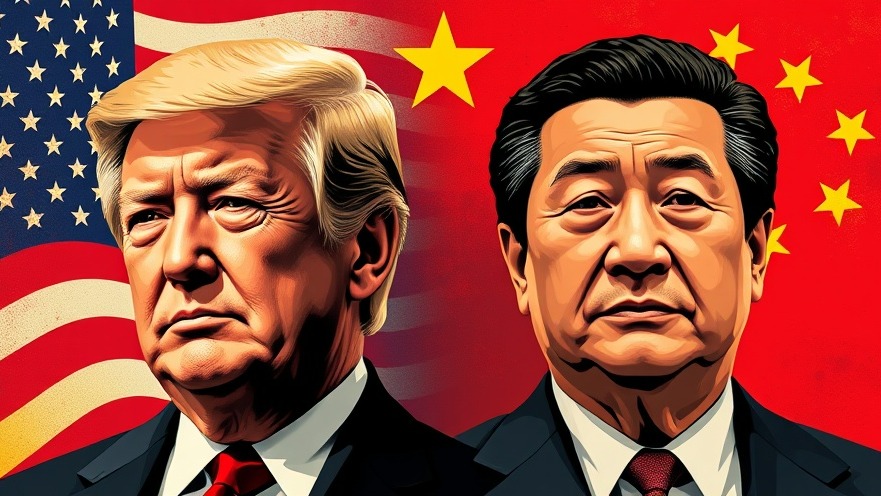
Breaking Down the Trade Standoff Between the US and China
The United States and China, two of the world's largest economies, have navigated a complicated trade landscape marked by tariffs, sanctions, and diplomatic tensions. In recent months, speculation about who would yield first in this ongoing trade deadlock has reached a fever pitch. Understanding the dynamics of this standoff is crucial for franchisors aiming to adapt their strategies and operations based on political developments.
Historical Context: The Seeds of Trade Tension
The roots of the current trade conflict can be traced back to policies enacted during previous administrations that led to escalating tariffs on various goods. These measures aimed to protect American jobs and industries; however, they often resulted in increasing costs for businesses across sectors, including franchises that rely on imported goods for their operations. By reflecting on this history, franchisors can better appreciate the long-term implications of current policies.
The Role of Tariffs: What It Means to Franchises
President Trump's administration introduced tariffs as a tool to negotiate trade terms favorably for the US. For many franchisors, these tariffs translate directly into increased costs for goods and services essential to their brand's maintenance. Understanding how tariff adjustments can impact supply chain strategies is vital for franchisees looking to maintain brand consistency across locations.
Future Predictions: Navigating the Trade Landscape
As negotiations unfold, future predictions suggest a prolonged back-and-forth may become the norm between the US and China. For franchisors, this means continuously monitoring international relations, adapting supply chains, and ensuring operational efficiency amidst fluctuating costs. As certain economies pivot towards more localized sourcing, franchisors should strategize on diversifying their supply chains.
Counterarguments: Perspectives on Trade Policies
Not all experts agree on the efficacy of the tariffs and trade restrictions. Some argue that a focus on domestic growth may stifle international collaboration, crucial for many franchise brands that thrive on global partnerships. Understanding these diverse perspectives allows franchisors to cultivate a more flexible and responsive business strategy in uncertain times.
Maximizing Operational Efficiency Amidst Trade Uncertainty
For franchisors, developing effective strategies to mitigate the impact of trade tensions is crucial. This involves finding alternate suppliers, leveraging technology for supply chain management, and ensuring franchisees are engaged with efficient operational practices. Brands that adapt quickly are more likely to maintain their market edge and franchisee satisfaction.
Call to Action: Stay Informed and Prepare
The ongoing trade negotiations between the US and China can significantly shape market dynamics. As a franchisor, staying ahead requires proactive engagement with these developments. Consider regular check-ins with your suppliers, leveraging technology to streamline operations, and fostering open communication with franchisees. The more informed and agile you are, the better positioned your brand will be to thrive despite these external pressures.
 Add Row
Add Row  Add
Add 






Write A Comment